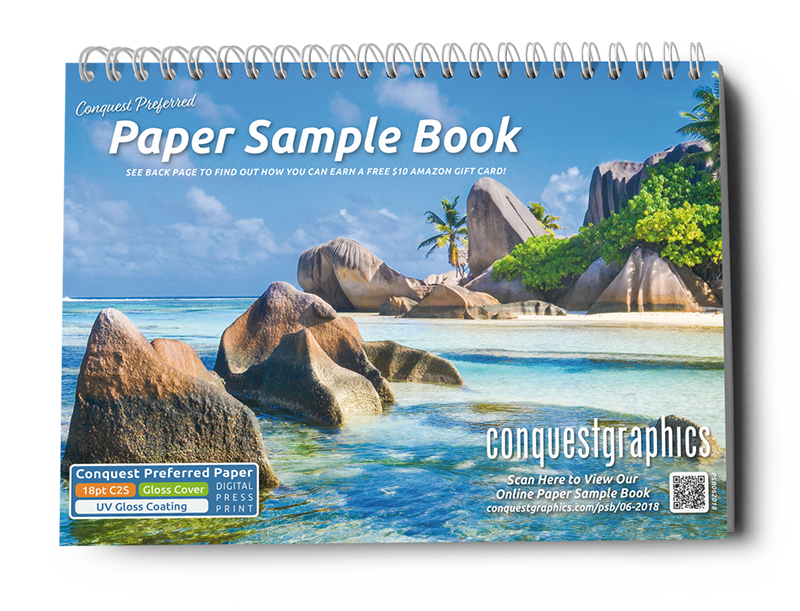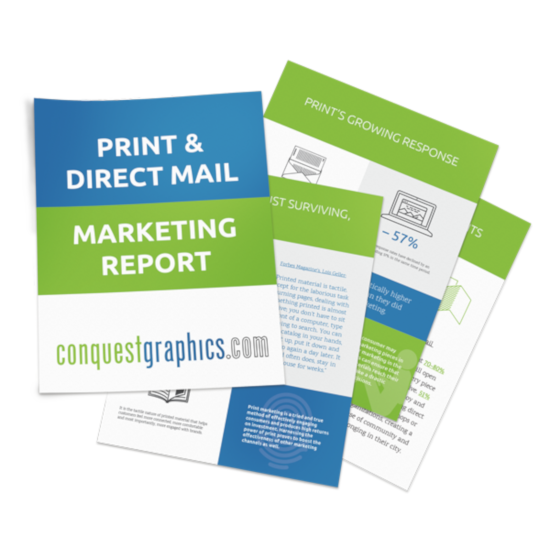
It’s beginning to near the end of 2019, which means for many businesses, the financial year is also about to come to a close. And you know what that means? It's just about prime annual report season!
An annual report is basically an annual publication that comes out usually towards the end of a businesses' fiscal year and serves as a platform for businesses and nonprofit organizations to publicly report the status of their organization’s operations over the previous year.
These reports can also serve a number of PR purposes and have been shown to be highly effective at generating new business, which means content, clarity and good design are key top making these documents as useful as they can be.
Simply put, annual reports provide customers, investors, shareholders, donors, boards of directors, employees and the general public with the information needed to assess an organization or business’ progress over the past year towards achieving their long term goals. Not only that, but they also provide the ultimate place to establish what those long term goals and priorities are, which is an extremely important part of building and establishing a company or organizational culture and identity.
While publicly traded companies are required to release annual reports (also known as Form 10-K) that follow specific formats that adhere to the United States Securities and Exchange Commission (SEC) requirements, it's increasingly common for organizations to release multiple versions of their report for different audiences and different media. Additionally, nonprofit organizations also typically have a little more freedom to develop their own unique designs and structure for their annual reports.

A Note About Nonprofits
While they don't have to file a Form 10-K, nonprofits are often required by the IRS to report their earnings by submitting a Form 199, so this means a majority of them have to compile a body of similar types of financial data about their organization anyways. Since keeping track of this data and reporting it to the IRS is required by law, nonprofits might as well make the most of it by making it publicly accessible so their stakeholders, prospective stakeholders and any interested members of the public can easily have a means of gathering information about tthe legitimacy and honesty of their operations.
Publishing this kind of information also makes it so anyone in the general public can learn more about your organization without having to submit a formal request for information in the future, allowing your annual reports messaging to reach a far broader audience.
Alongside this information, organizations and businesses typically differ in how they present the additional information about their business and operations, but they usually provide contextual information that informs the reader about the goals and daily operations of the business or organization that keep it afloat.
This kind of information is invaluable for building brand trustworthiness for organizations or businesses since it provides them with the opportunity to publicly comment on the state of their operations and to present the story of their industry and how they fit into it, while also providing the readers with a clearer picture of what that organization is planning on doing in reaction to that as they push towards achieving their long-term business or organizational goals.
Here are our top 10 recommendations for ensuring this year’s annual report stands out and leaves the right kind of impression on your investors or donors for the year to come.
1. Minimize your reliance upon large, unbroken bodies of text
This is one of the most important things to constantly remain aware of for any communications that are being posted publicly by your organization. People don’t want to have to spend a large amount of time reading through your report as if it were a textbook to get an understanding of how your company or organization is doing.
People don’t want to have to spend a large amount of time reading through your report as if it were a textbook to get an understanding of how your company or organization is doing.
Keeping it shorter has a certain beauty and simplicity to it. To keep your copy shorter, try to think of your report as if it were being presented to a class of students. You need to be able to explain the concept of your business thoroughly and simplistically, but you don’t want to include too many words so that you bore the audience.
2. Show pictures of your business or organization in action
When you’re trying to explain your organization to investors and the general public, it helps to show them exactly what it looks like.
And what better way to capture the spirit of your organization than through photography?
Including sections of just images and a few blockquotes is one possible way you could showcase data that would otherwise remain unbroken and monotonous. Expanding upon recommendation number 1, using pictures is one easy way to break up text. When you’re laying out the pages, think of it more like a magazine spread than a textbook or business report.
Adding images of your employees (or even just stock images of happy, smiling people) can work wonders on the positivity of the impression the report has on its audiences. When people see other people smiling, there are subconscious illogical leaps that are made that effectively serve to humanize your brand to them, and they will remember it far more positively when ever faced with a situation of brand recall in the future.
3. Organize your report well and make sure the sequencing of sections is logical and easy to follow
When you’re first planning how you will format the report, one of the first things you should think about is how you want the final report to be organized.
One of the key things that all annual reports have in common is some sort of reporting on the yearly earnings and financials of the publishing organization or business. By reporting their earnings publicly, an organization seems more transparent about its business practices, which is encouraging to potential investors or donors who want to see it succeed.
Are you going to include all the SEC required information up front or are you going to shove it all in the back so the customers and potential investors only have to open the first few pages to get to the information relevant to them?
Another way to figure out how you want to arrange it is to look at your requirements. If the IRS or the SEC have specific sets of rules about what the mandatory formats your business’ information must be in, always make sure to follow those rules first and foremost.
Depending on how many versions of your annual report you wish to produce, you may want to add different types of messaging for different media. For example, if you're publishing a beautiful, interactive, public-facing report in HTML on your website, it's possible to embed videos and interactive infographics that allow your customers and the general public to really personalize their experience with your brand in unique and memorable ways.
If you're only publishing a digital PDF of your report, it may be smart to make sure all the text in it is indeed textual and not just images of the text. One way to test this is to try highlighting the text with your mouse.
If you can highlight the text in the PDF, then it's text; if you can only drag an image of whatever is beneath your mouse, then you may have exported your report as a JPEG embedded in a PDF which is easy to do if you're trying to compress the file size of your annual report when uploading.
The reason to make sure the PDF has actual text is it is so that it is indexable by search engines like Google. SEO is key if you're going to attract a larger audience than just your regular website visitors, so make sure to either have an HTML version of the report or have a textual PDF available for downloading and viewing on your site; then notify Google of it by submitting your sitemap.
If you're anything like most designers or brand visionaries, you probably like to check out examples from other successful businesses out in the world that consistently produce high quality annual reports. To facilitate the finding of these reports, we recommend using this complete and up-to-date listing of annual reports. Their index allows you to look up any company by name or ticker symbol, and from the company's page you can easily download and view all their recent annual reports. They also provide the option of ordering a printed version of as many business or organizations' annual report by mail absolutely free of charge.
4. Design to Brand Visual and Editorial Standards
While the same design and layout principles apply to annual reports as to any other publicized business document, there are a few specific things that can be done with annual reports to help them stand out to investors while also encouraging others to consider investing in your business or organization in the future.

This almost goes without saying, but whenever you’re putting together any public facing business communication, you need to make sure you follow your established brand or design standards.
These are the standards that dictate the exact colors, typefaces, images and graphic elements that make up the identity of your brand and should become visually synonymous with your brand from the perspective of your publics.
Your brand’s visual guidelines need to be clearly defined and simple. Otherwise, you and anybody else who may have to work with your business or organizations visual branding will have a difficult time keeping the rules in order and then risk diluting your brand through off-brand visual presentations.
If you either don’t have a set of visual brand guidelines or don’t know how to make one of your own, check out our past blog on Best Practices: Creating a Branding Guide.

Aside from visual branding, an annual report is a great place to add to your brands editorial voice. The words you choose and the messages you get across effectively through text are going to be seen as a reflection of your brands values and beliefs no matter what, so make sure it’s a good one.
5. End on a Good Note
Even if your report has distinct sections that aren’t cohesive or that don’t transition well into each other, it’s important to make sure the ending of your report has some sort of review, summary or round up of all the main points from the report that you’d like your audience to remember.
When you’ve finally reached the end of a financial report, even if you read the entire thing so far or just skimmed it (which is far more commonly how people read annual reports), you’re most likely going to look at the last few pages to see if there’s any summarization of what the report contains.
If you’re unable to find one here, you typically look back to the introduction section to get a general idea of what the report contains, but it typically doesn’t have the same kind of tone to it that a good review and conclusion would have.
When writing a review and conclusion of your report it’s important to think of your entire report as a type of autobiographical narrative about your business or organization. You don’t want to come across as unhealthily confident or cocky, but you also don’t want to come across as underestimating your potential or competitiveness.
It’s important to let the summary section be the one place your organizations brand voice comes through most clearly.
6. Start with Gratitude
Usually, annual reports start with some sort of letter or address from the CEO or Executive Director to the audience (presumably investors or donors) that sums up the highs and sometimes lows that the organization or company has gone through in the past year.
 One of the key elements to this letter, or to any portion of the report that directly addresses the reader, is to make sure you express your gratitude. Whether it’s for customers or the shareholders or to anybody, gratitude is one of the most important things to express for your brand to be perceived as a positive one.
One of the key elements to this letter, or to any portion of the report that directly addresses the reader, is to make sure you express your gratitude. Whether it’s for customers or the shareholders or to anybody, gratitude is one of the most important things to express for your brand to be perceived as a positive one.
Always make sure to attribute your success appropriately to your customers or stakeholders and thank them for everything that it’s allowed you to do. In this way, you can show off some of the amazing things your organization or company has accomplished in the past year without sounding like your bragging or overly-confident.
Investors do like to see a little fire, so don’t be too mushy or emotional. Strike a nice balance between thanking your customers and showing how you’re going to attract even more, different types of customers in the future so the readers feel like you’re going to keep growing.
7. Use Simple Sentence Structure
Make sure your sentences aren’t too long. Long, complex sentences are the bane of any writer, and drafters of organizational or business annual reports are no exception. Sounding like you’re intelligent is important for sophisticated businesses and sounding informed about what your business does is essential, but you don’t want to overwhelm your readers with gratuitous information.
Ideally, your sentence structure should be even simpler than what you're reading right now in this blog post. One great tool for checking the complexity of your grammar and sentence structure is to use the Hemingway App, which is basically an in-browser text editor that you can paste your text into and instantly get a reading of the "grade level" of your writing. If it's above a 9th grade level of writing or reading, your writing is a little too complex and you should follow Hemingway App's guidance for clarifying your copy.
8. Integrate Stats Throughout
Statistics and data are some of the most compelling parts of an annual report for many investors and donors. For an investor to trust your organization with the future of their money, they want to see that you’re already having an impact on your given line of work.

Try to give your report a magazine-style feel that incorporates editorial content with stats and data as well as infographics and charts to make a visually engaging and attractive layout.
Having a report that looks like a magazine spread will draw readers in as they want to learn more about what the people in your organization are doing to make the world a better place. Once a prospective investor or donor sees your organization has a proven track record in meeting it's
9. Let Important Information Stand Alone and Shine Through
Whenever there’s something that your organization or business has accomplished that would be very important for your investors and donors to know about, make sure to highlight it by setting it apart from the rest of the information.
Also remember that whatever you set apart and make appear important about your organization’s past year also says something very important about you.
If you choose to highlight only the financial successes and not the benefits that may have been added for your customers and shareholders, the perception of your organization will be impacted, most likely negatively.
You want to show how you’ve done good work, whether its towards your organization’s goals, the goals of your customers or the goals of your board of directors.
10. Print Your Reports!
One of the ongoing debates today is over whether it’s a good idea to print your report or just leave it in a digital format. While most businesses have already started producing digital editions of their reports for general distribution around their offices, on their websites and among clients, a majority of businesses still produce a printed version of their report for providing to major investors and stakeholders.
In fact, most marketing firms who serve business and nonprofit ventures still advise their clients to print a version of their annual report. It can be as simple as printing out and binding the PDF version of your digital report, or it could be a matter of consolidating the information to reduce the page count. Either way, it's not much extra work or investment to produce a printed version of your annual report, and the results make it more than worth it.
Printing a report allows you to provide a lasting, collectible version of your report that your investors and donors will be able to keep as a reminder of your business or organization's impact on the world around it.
One of the other unique opportunities presented by producing both a printed and digital version of your report is the option to incorporate interactive elements in your digital report that enhance the way a reader can interact with the information. Linking to pages on your website that describe in detail the topics you touched on in your report allows you to slim the report’s text down a little bit so it’s more concise and direct.
Graphic elements can also be turned into interactive infographic elements to unify the visual elements on your printed reports, PDF reports, and externally linked information from your website or videos, etc.
The printed version provides a certain element of longevity that is like a historic record of the annual report, increasing its relevancy for future reference and providing an enduring physical medium that potential stakeholders and stakeholders alike will most likely keep in their office or home throughout the entire year following its publication.
Therefore, it’s absolutely essential you select the best printer you can find at the most affordable and friendly price point you can find. When you finally get to the point of submitting your files to your chosen printer, be sure to check out our tips on How to Prepare Your Files for a Commercial Printer.
If you’d like to choose a printer that strikes the perfect balance between quality and affordability, check out Conquest Graphics’ printed products that could be used as annual reports: booklets, catalogs, flyers and magazines, as well as a few supplemental printed products you might like alongside your reports such as posters, letterhead, envelopes or banners.
No matter what, make sure you get the optimum impact out of your organizations money when printing your annual reports with a commercial printer.
Always remember just how important an annual report can be for influencing investors and donors for the entire year to come, and make sure you follow the tips above to ensure your annual report is a success.









